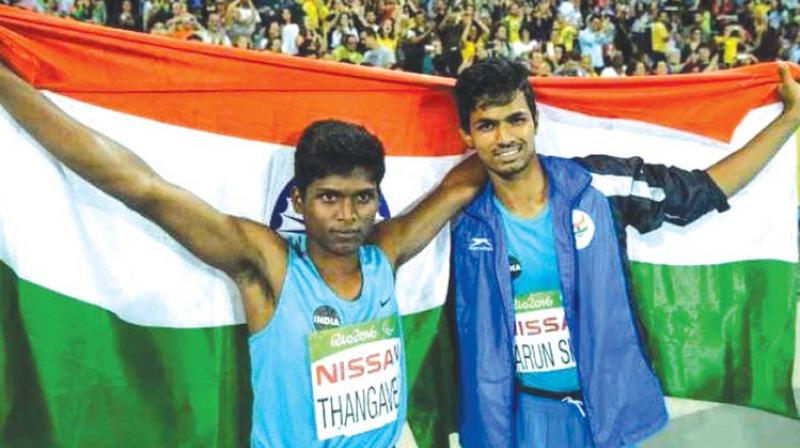The revolution lies elsewhere

Apart from a preternatural ability to soar above a horizontal bar, T. Mariyappan had nothing in the run-up to the 2016 Paralympics in Rio de Janeiro. Even buying a decent pair of shoes was an ordeal for the high jumper whose childhood was ravaged by grinding poverty. Not getting a passport in time prevented him from taking part at the 2012 London Paralympics. Foreign exposure, which was critical for his qualification to Rio, remained an elusive dream for Mariyappan until he got help from Satyanarayana, now his mentor and coach.
According to Satyanarayana, he spent close to Rs 11 lakh to ensure that Mariyappan went to Rio. A gold medal in the Brazilian city transformed the life of the athlete from a small village in Salem district in Tamil Nadu. The early plight of Mariyappan and his subsequent flight to stardom isn’t an isolated fairy tale story in Indian sports. As disparate organisations __ most of them never had the faintest connection to sports __ continue to shower cash incentives on him after his return from Rio, he faces a problem of plenty. Hopping from one city to another, Mariyappan has been crisscrossing the country nonstop to accept the adulations of his compatriots. The overbearing attention and unimaginable riches have clearly overwhelmed him and his mind continues to revisit his wretched childhood. Few countries can celebrate their sports achievers like India. Unfortunately, India also stands out for its callous attitude in not providing basic facilities to its athletes in their formative years. For example, most of the stadiums in the country are disabled unfriendly.
The situation isn’t rosy for others as well because India is notorious for turning a blind eye to work at grassroots level. Buying basic equipment, lack of infrastructure, financial constraints for exposure, nepotism in selection and discouragement from educational institutions are some of the myriad problems that confront our young athletes. The eagerness of corporate India to bask in the reflected glory of Rio medallists, P.V. Sindhu and Sakshi Malik, sticks out like a sore thumb. Sindhu and Sakshi are the embodiment of Indian women’s resilience but the rat race among jewellers to cash in on the duo’s medals to sell gold is ironical. Is it fair for companies that do nothing to promote sports to jump on the bandwagon after an athlete wins an unlikely medal?
Governments also stand accused of indulging in competitive populism. Delhi chief minister Aravind Kejriwal has presented Rs 2 crore to Sindhu. He could have spent the money on building a badminton court in a blighted area of the Capital to unearth the next Sindhu. Kejriwal could have named the facility after Sindhu. Lavishing the badminton star with fat cheques when poor athletes continue to languish without anything is an avoidable Indian disease. Even Sindhu would like her disadvantaged compatriots to have a crack at showcasing their latent talent. The revolution lies elsewhere.

